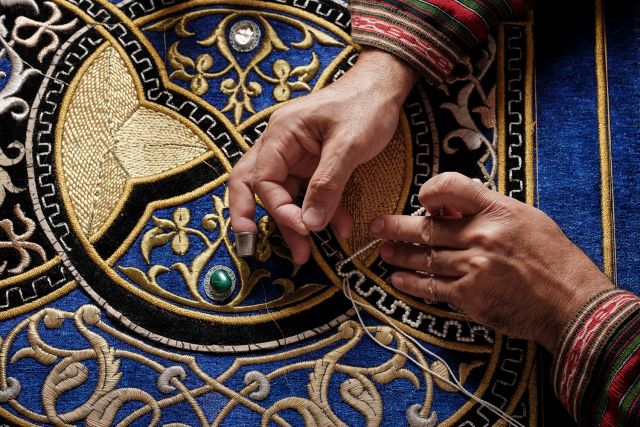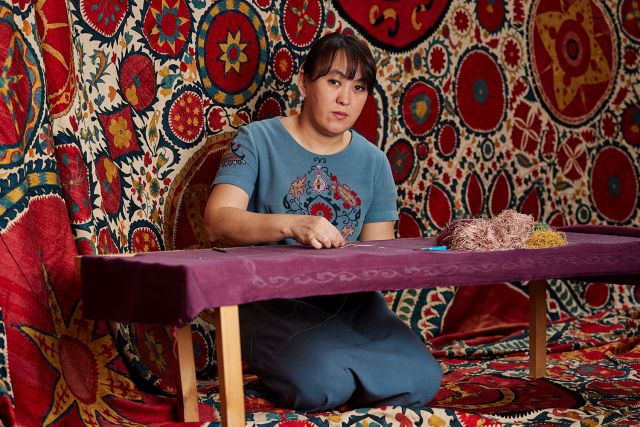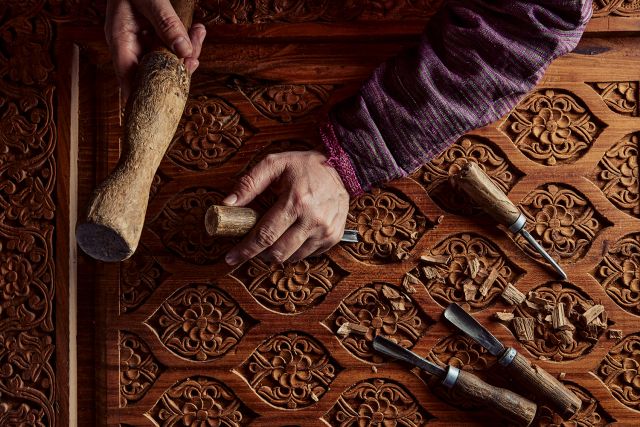These ornamental vases and lyagan are covered with a green glaze containing copper. Brush painting with chrome on kaolin background is used. The ornaments on the pottery include the tree of life, moon flowers, birds and fish that symbolise life.
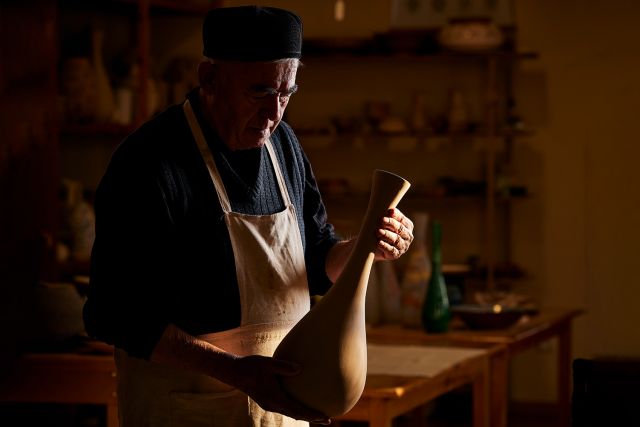
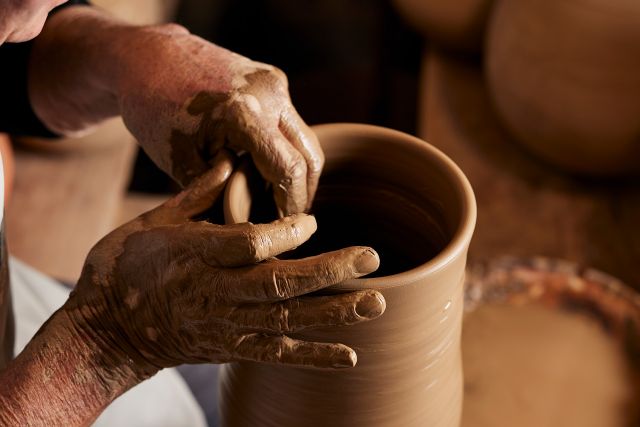
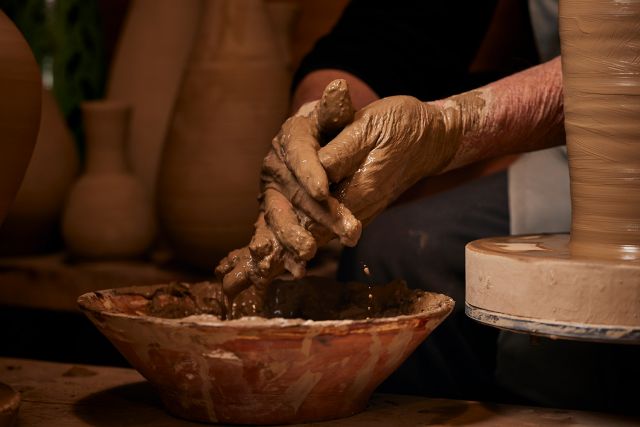
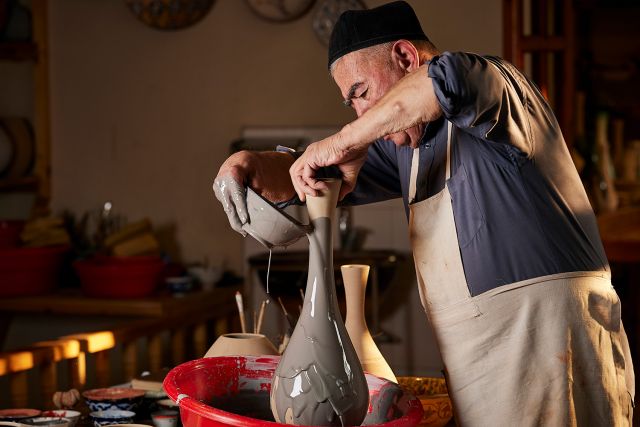
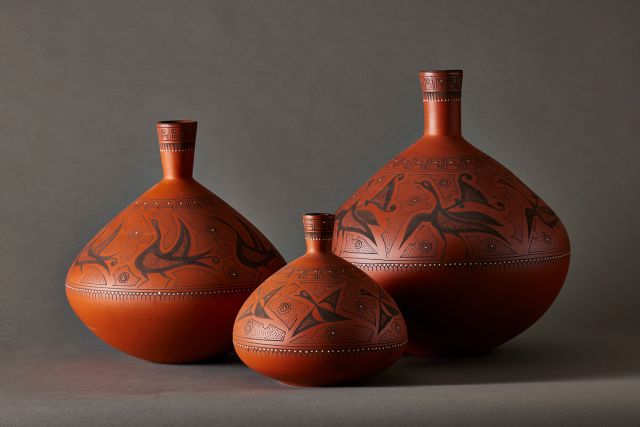
Akbar Rakhimov
- Ceramicist
- Tashkent, Uzbekistan
- Master Artisan
- Recommended by The Art and Culture Development Foundation
By appointment only
+998 908054401
The fifth element in pottery making
- • Akbar studied geology and learned about the materials present in nature
- • He uses only mineral paints that withstand the highest heat
- • He believes in a metaphysical significance to clay
Akbar Rakhimov belongs to a family of ceramicists, following in the footsteps of his grandfather and his father. His father was famous in the Soviet Union and his work was exported to France and Great Britain. Akbar learned everything about pottery from him and today he himself teaches his son and grandson, as well as other children, expecting them to continue the tradition. Every year he joins archaeological expeditions, where he is able to conduct his artistic research. Witnessing excavations of ancient monuments and admiring natural landscapes inspire Akbar to design future pieces. He often works with traditional shapes and patterns, studying them and demonstrating the power and energy of cultural heritage.
Read the full interviewWorks
Photo: ©Andrey Arakelyan

Photo: ©Andrey Arakelyan
The Murghoba water vessels were made with the technique of engraving and watering glaze. They are part of the Soul of Birds collection and in the compositions, the main pattern is a symbolic bird, Humo.

Photo: ©Andrey Arakelyan
These decorative vases belong to the collection called The tree connecting Heaven and Earth. They were made with the technique chisma, which is when the composition is etched with a needle. Based on motifs from the second century B.C., trees of life are used in these compositions.

Photo: ©Andrey Arakelyan
These ornamental vases were inspired by 18th-century Tashkent. The vases are made of red clay and covered with glaze. Brush painting with manganese, cobalt, copper and iron is used. The composition illustrates birds of paradise transforming into flowers.

Photo: ©Andrey Arakelyan
These decorative bowls showcase the motifs of the Samanid era. A milky white background is created using quartz with kaolin, while brown patterns are a mixture of manganese and kaolin. The images on the plates depict birds of paradise and a royal petal.





